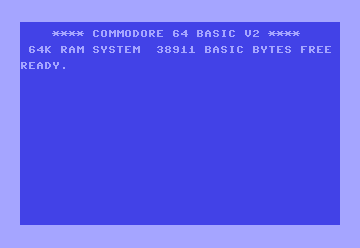
READ: Your Data Miner
Need to pull values from your code's treasure chest? Look no further than the READ command, your trusty data miner! This essential tool works hand-in-hand with the DATA command, allowing you to retrieve numeric and string values stored in your program and assign them to variables. Think of it as your key to unlocking the hidden treasures of your DATA statements!
Syntax
READ <variable1> [, <variable2>, ... , <variableN>]
Where:
- <variable1>, <variable2>, ... , <variableN>: A comma-separated list of variables (both numeric and string) that will receive the values from the DATA statement. Make sure the variable types match the data types in the DATA statement (e.g., use string variables for strings and numeric variables for numbers).
Applications
The READ command is your gateway to:
- Accessing stored data: Retrieve values from
DATAstatements for use in calculations, comparisons, or display. - Processing lists and tables: Iterate through data stored in a structured format using loops and the
READcommand. - Creating custom character sets: Read pixel data from
DATAto define unique characters for your programs. - Initializing variables and arrays: Load initial values from
DATAto set up your program's starting state.
Code Examples
1. Simple Value Retrieval:
10 DATA 10, "Hello", 3.14
20 READ A, B$, C :rem A = 10, B$ = "Hello", C = 3.14
30 PRINT A, B$, C :rem Output: 10 Hello 3.14
This example demonstrates reading numeric and string values from a DATA statement.
2. Reading a High Score List:
10 DATA "Alice", 15000, "Bob", 12500, "Charlie", 9800
20 FOR I=1 TO 3
30 READ N$, S
40 PRINT N$; TAB(15); S :rem Print name and score aligned
50 NEXT
This snippet reads names and scores from a DATA statement and prints them in a formatted way.
READ in the Wild: The Text Adventure Generator
Imagine you're creating a text-based adventure game where the player's choices lead to different outcomes. You could use DATA to store the various story branches and READ to load the appropriate text based on the player's decisions.
Don't let your data languish in the depths of your code! With READ, you can easily access the values stored in your DATA statements, making your programs more dynamic and versatile. It's like having a pickaxe for your code's data mine, allowing you to extract valuable nuggets of information. So unleash the power of READ and watch your programs come alive with data-driven possibilities!
Key Points to Remember:
READandDATAalways work together. You can't useREADwithout a correspondingDATAstatement in your program.- The
RESTOREcommand can be used to reset the internal pointer to the beginning of theDATAlist if you need to read the values again. - Use
READin conjunction with loops to efficiently process lists and tables of data.
